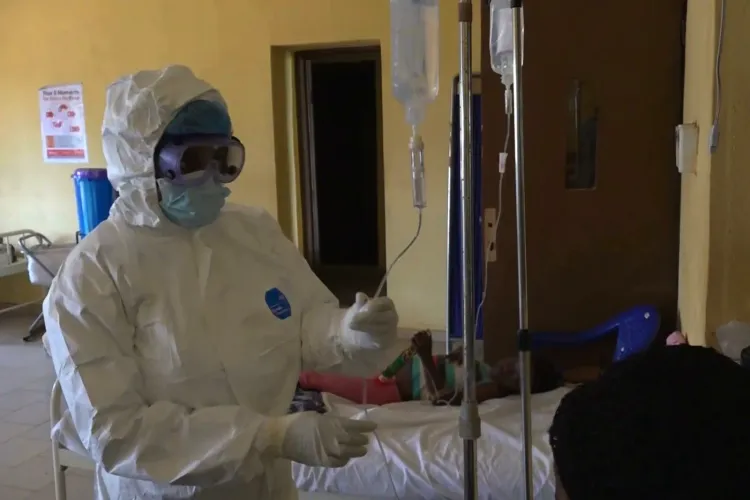What is the latest update on the rising death toll from Lassa fever in Nigeria?

Synopsis
Key Takeaways
- The death toll from Lassa fever in Nigeria has reached 138.
- 717 confirmed cases have been reported this year.
- Young adults aged 21-30 are the most affected demographic.
- Infection rates are highest in Ondo, Bauchi, and Taraba states.
- Urgent public health interventions are necessary to combat the outbreak.
Abuja, May 16 (NationPress) The death toll from the Lassa fever outbreak in Nigeria, the most populous country in Africa, has tragically increased to 138 since the start of this year, according to public health authorities. In a recent statement published on its website, the Nigeria Centre for Disease Control and Prevention (NCDC) reported a total of 717 confirmed cases.
At least 18 out of the 36 states have been impacted by this viral haemorrhagic disease in 2023, with the worst-hit regions being the southern states of Ondo and the northern states of Bauchi and Taraba, which together account for over 71% of confirmed cases. This alarming trend indicates persistent hotspots despite nationwide interventions, as noted by the NCDC.
The recent figures show that the case fatality rate has climbed to 19.2%, with the public health agency expressing serious concern over the rising number of fatalities.
The NCDC has identified that young adults aged between 21 and 30 are the most affected demographic, with the median age of infection being reported at 30 years. Furthermore, more males than females have contracted the disease, with a male-to-female ratio of 1:0.8.
Major challenges identified include poor health-seeking behavior, high treatment costs in certain areas, and limited awareness in communities heavily burdened by the disease. The NCDC has activated a multi-sectoral incident management system to manage a coordinated response.
In 2024, Nigeria experienced 214 deaths due to Lassa fever, as reported by the NCDC and Xinhua news agency.
The World Health Organisation classifies Lassa fever as an acute viral haemorrhagic illness caused by the Lassa virus, a member of the arenavirus family.
Humans typically contract the Lassa virus through contact with food or household items contaminated by the urine or feces of infected Mastomys rats. The disease is endemic within the rodent population in regions of West Africa.
Transmission between individuals and laboratory spread can also occur, especially in healthcare settings lacking adequate infection prevention measures.
Timely diagnosis and treatment are crucial. The overall case fatality rate stands at 1%, while for hospitalized patients with severe manifestations, it is approximately 15%. Early supportive care, including rehydration and symptomatic treatment, can significantly enhance survival rates.
About 80% of those infected with the Lassa virus remain asymptomatic, while 1 in 5 infections lead to severe illness, impacting multiple organs such as the liver, spleen, and kidneys.








